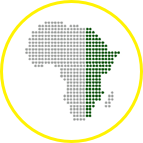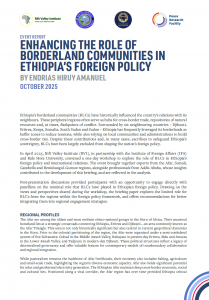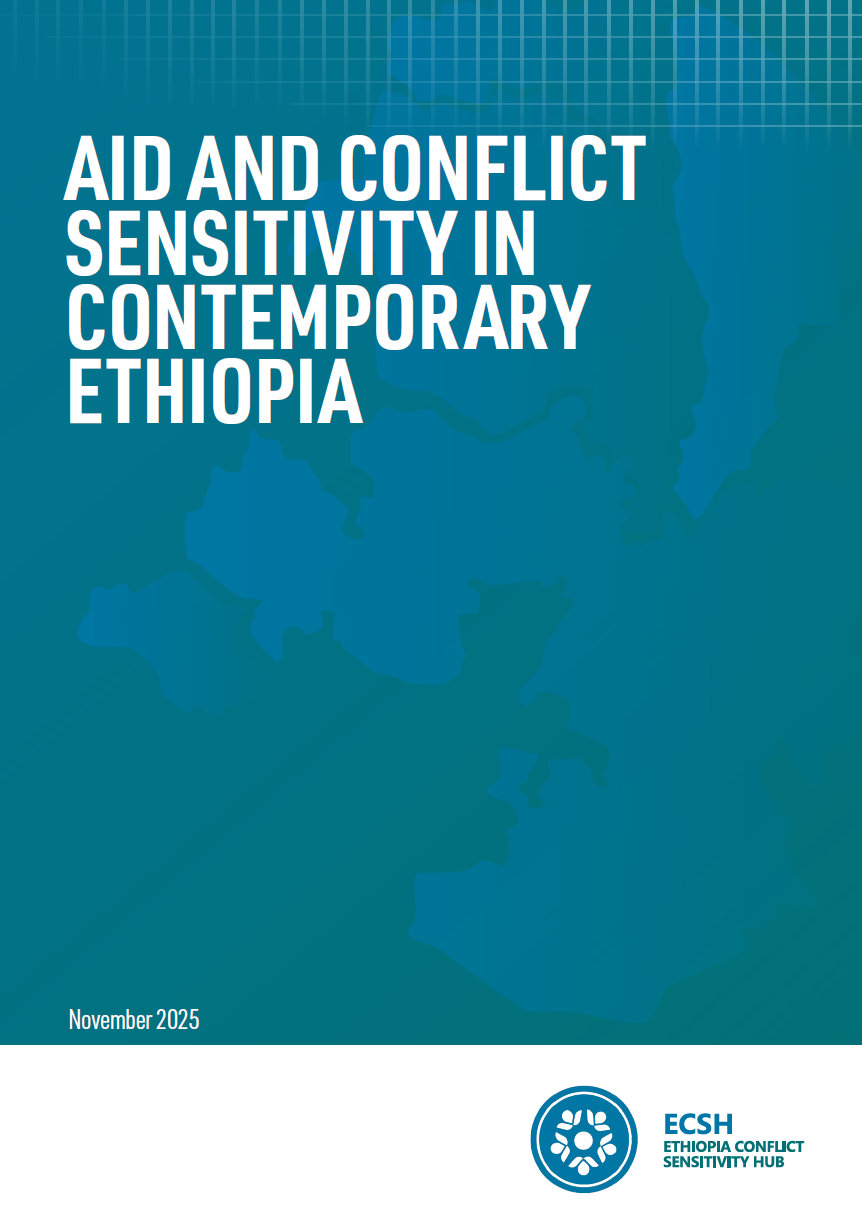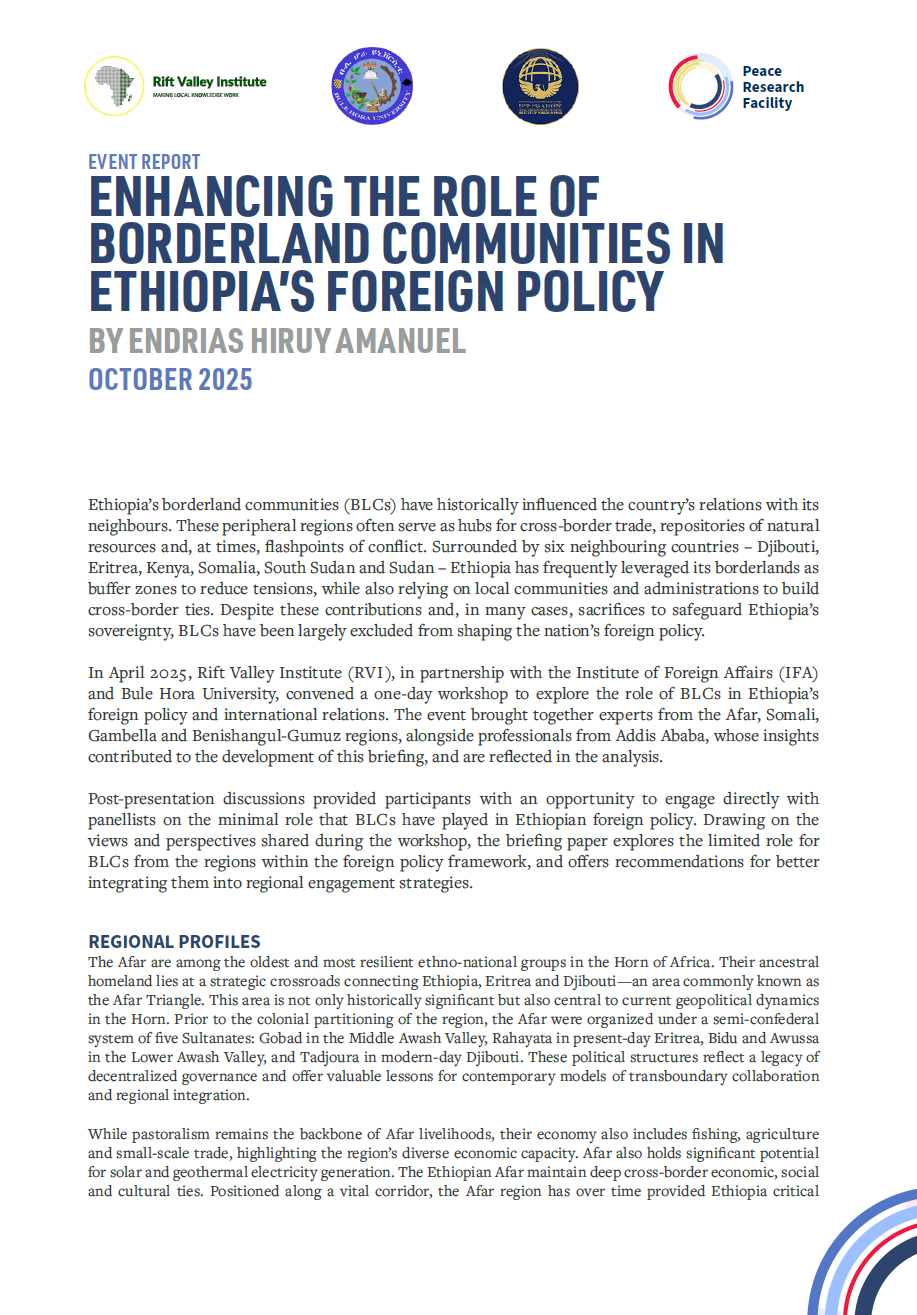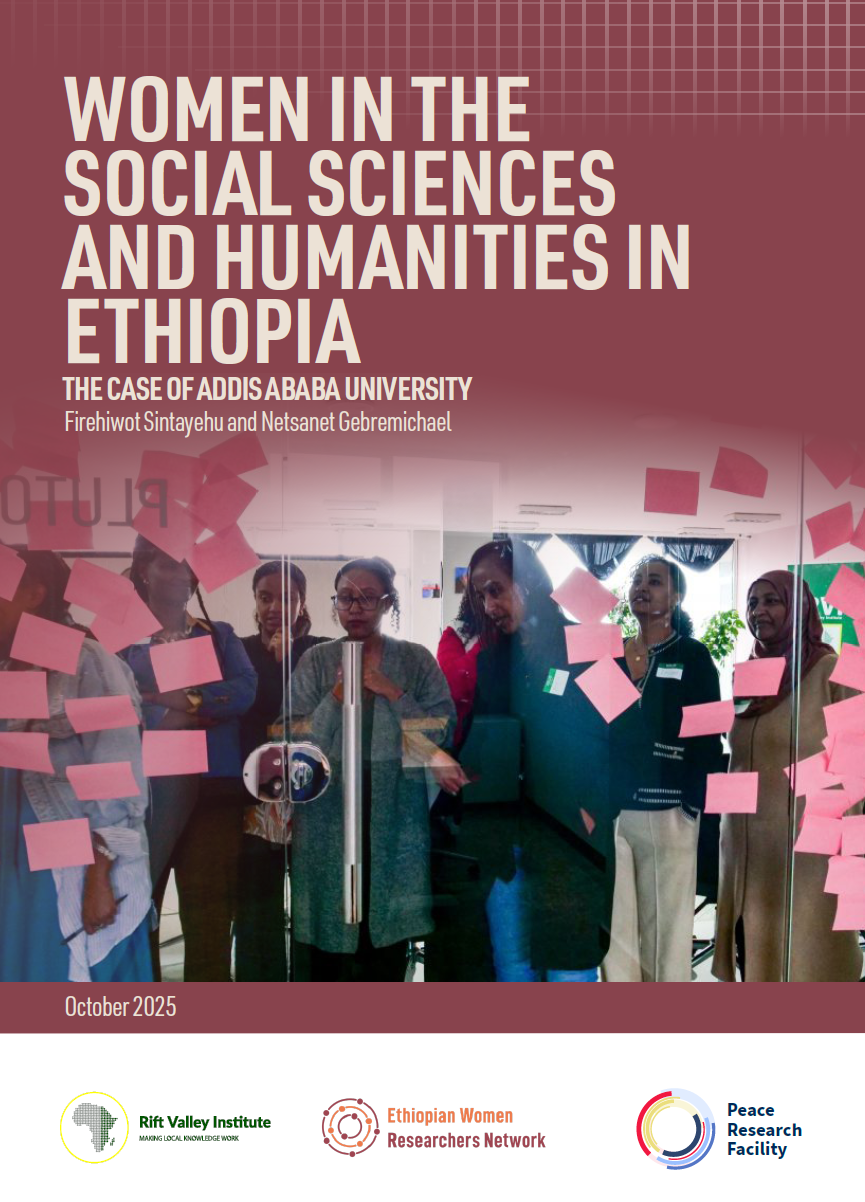Ethiopia’s borderland communities (BLCs) have historically influenced the country’s relations with its neighbours. These peripheral regions often serve as hubs for cross-border trade, repositories of natural resources and, at times, flashpoints of conflict. Surrounded by six neighbouring countries – Djibouti, Eritrea, Kenya, Somalia, South Sudan and Sudan – Ethiopia has frequently leveraged its borderlands as buffer zones to reduce tensions, while also relying on local communities and administrations to build cross-border ties. Despite these contributions and, in many cases, sacrifices to safeguard Ethiopia’s sovereignty, BLCs have been largely excluded from shaping the nation’s foreign policy.
In April 2025, Rift Valley Institute, in partnership with the Institute of Foreign Affairs (IFA) and Bule Hora University, convened a one-day workshop to explore the role of BLCs in Ethiopia’s foreign policy and international relations. The event brought together experts from the Afar, Somali, Gambella and Benishangul-Gumuz regions, alongside professionals from Addis Ababa, whose insights contributed to the development of this briefing, and are reflected in the analysis.
Post-presentation discussions provided participants with an opportunity to engage directly with panellists on the minimal role that BLCs have played in Ethiopian foreign policy. Drawing on the views and perspectives shared during the workshop, the briefing paper explores the limited role for BLCs from the regions within the foreign policy framework, and offers recommendations for better integrating them into regional engagement strategies.
Ethiopia Peace Research Facility
This report was written for the Ethiopia Peace Research Facility (PRF). The PRF is an independent facility combining timely analysis on peace and conflict from Ethiopian experts with support for conflict-sensitive programming in the country. It is managed by the Rift Valley Institute and funded by the UK government.
